If you love exploring nature, you’ll really love visiting the Faroe Islands!
[Updated April 2020]
This post contains affiliate links for which Expedition Wildlife may receive a commission (where applicable) at no additional cost to you.
These are our recommended must-visit destinations on the Faroe Islands. Below you’ll find a Google Map to explore where each is located on the Islands!
Each destination is magical in its own way. Take the time to really soak in all these places have to offer!
Check out our comprehensive Faroe Islands Travel Guide for information on getting to and around the Faroe Islands, gear recommendations, and more!
If you are staying in Torshavn for a short time and won’t be renting a car, don’t despair. There are plenty of tour operators that will take you to these amazing sites, including this four-day tour of the Faroes!
1. Gásadalur
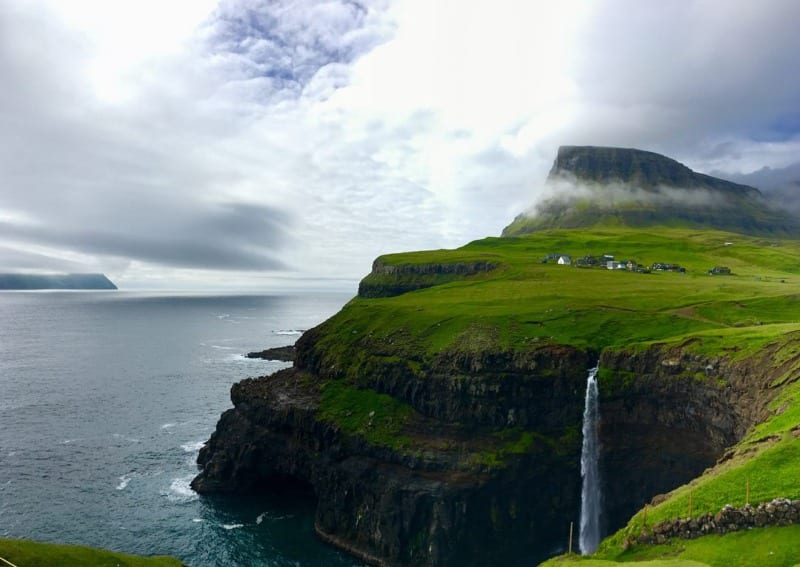
Photo by Christa Rolls
Gásadalur is one of the most photographed sights on the Faroe Islands, and for good reason. Its close proximity to the airport (about a ten-minute drive away) makes it accessible to visitors. And let me tell you, the scenery is stunning.
The massive waterfall is created by mountain runoff leading through the town of Gásadalur. The famous bird-nesting island of Mykines can even be seen in the distance on a clear day.
As soon as you come out of the Gásadalur tunnel, you’ll wind downhill until you see gravel pull-offs on the street. Park here and walk down the grass pathway toward the ocean viewpoint!
If time permits, head up into town to the Cafe Fjorooy for a coffee. A marked mowed grass pathway behind the cafe leads to a wonderful sunset viewpoint.
2. Mykines
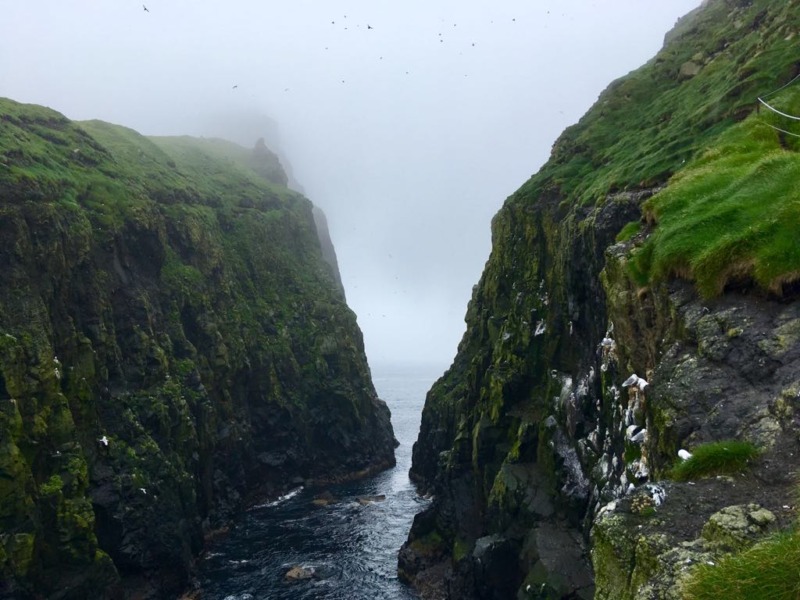
Photo by Nathan Rolls
Interested in seeing birds up close? Then a trip to Mykines (pronounced Me-chin-es) should be at the top of your list! In summertime, nesting birds in the tens of thousands call Mykines home.
From Sørvágur, a small ferry boat travels to Mykines twice a day, weather depending. You must book your ferry trip directly with the ferry company well ahead of time (at least a month) to get a spot. The ferry only runs from 1 May to 31 August, outside of which you must arrange for a helicopter transfer. Don’t forget the Dramamine if you’re prone to seasickness! If you aren’t planning on renting a car to travel the islands, book a trip through a tour company to see everything comprehensively and safely.
Visitors are required to pay an additional tourist fee prior to their visit. There is also a mandatory guide requirement in the “restricted area” outside of the hours of 11:00 to 17:00. We highly recommend you book a guide through the Visit Mykines website anyway. This greatly enhances your experience and keeps you safe in inclement weather.
The “restricted area” is reached after climbing a steep, grassy hill, then descending a set of steep, rock steps. Some more twists and turns, and you are brought to a cliff-side field to descend even further toward the ocean.
Here, you’ll already spot Gannets on rock outcrops, Puffins zipping in and out of burrows, Arctic Terns gliding down to steal fish from Puffins, and more. Once you’re nearly to the ocean, you’ll walk over an extension bridge that allows you to cross a large ravine. Thousands of Kittiwakes, Guillemots, and other sea birds nest only meters away.
Continue up, up, up to the Mykines Hólmur Lighthouse.
We also highly recommend staying on the island for at least one night! Just arrange your accommodation far in advance.
3. Nólsoy
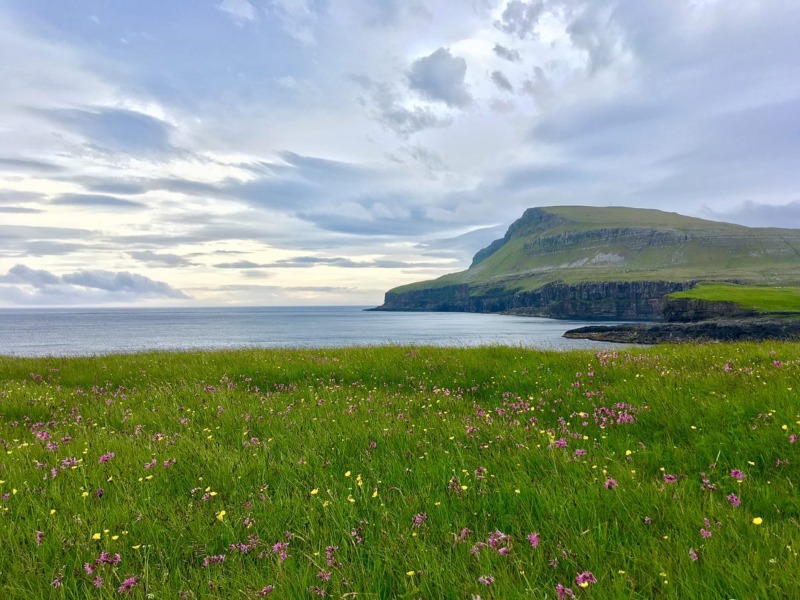
Photo by Christa Rolls
An easy 20-minute ferry ride from Tórshavn brings visitors to the small village of Nólsoy.
Colorful buildings greet visitors coming into the harbor, and sweet cafes, gift shops, and a handful of nice hiking trails make visiting even more enjoyable.
Bird lovers will want to extend their day trip to the island and plan to stay overnight. Nighttime is when some of the most incredible bird action happens!
Nólsoy is home to the largest Storm Petrel colony in the North Atlantic, and the sensory experience of seeing and hearing them is one-of-a-kind.
Contact Jóhanna directly at the Kaffistovan í Nólsoy in town to arrange for accommodation and Storm Petrel tours. You’ll spot colorful directional signs leading you to the Kaffistovan, and Jakubina will be awaiting you there.
Have a delicious dinner and breakfast provided by Jakubina’s cooking talents, and head out with your guide to hike into the hills to the bird cliffs around 21:00. Patience is key as you spot other nesting birds along the way. The call of Storm Petrels in their burrows fills the air around you just before their emergence around midnight!
In the morning, after you’ve gotten a bit of sleep, take the road Í Stong on the west side of town as it loops around the western cliffs of Nólsoy. Follow it up about ten minutes to see the island’s Arctic Tern colony in full action!
4. Skúvoy
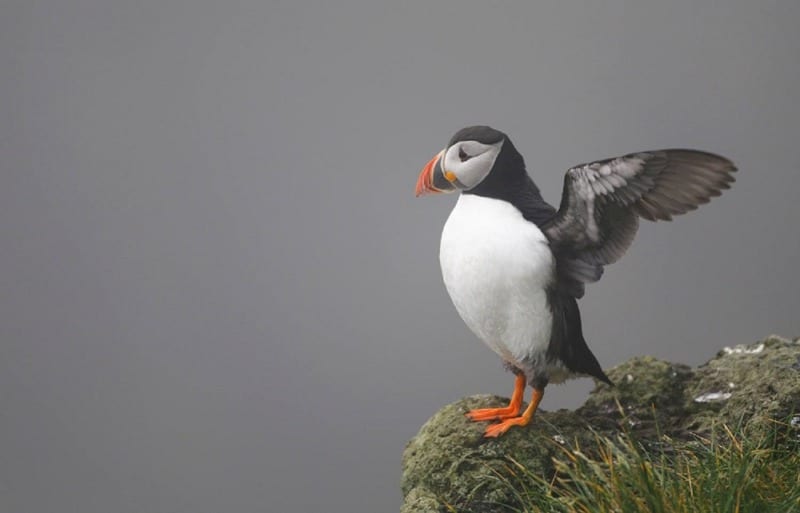
Photo by Nathan Rolls
Named after the stunning sea bird, Skúvoy is home to thousands of Skua in summertime. Skua take refuge and nest on Skúvoy until taking to the seas once again in the autumn. It’s also one of the best places to see nesting Puffins.
You have two options for visiting the remote island – either take the journey on your own for a day trip or book a tour.
From the Gamlarætt Ferry Port, about 15 minutes from downtown Tórshavn, take the boat to the island of Sandoy. Another 15 minutes overland brings you to the Sandur ferry port, where you’ll take a 30-minute ferry to Skúvoy.
There are no cars on Skúvoy and no accommodations, so you’ll only be able to go for the day. However, the hiking vistas and birdlife you’ll spot along the way make this hidden gem worth a visit. You can stay on the quiet island of Sandoy after your day trip to enjoy hiking, cafes, and art museums.
5. Bøsdalafossur
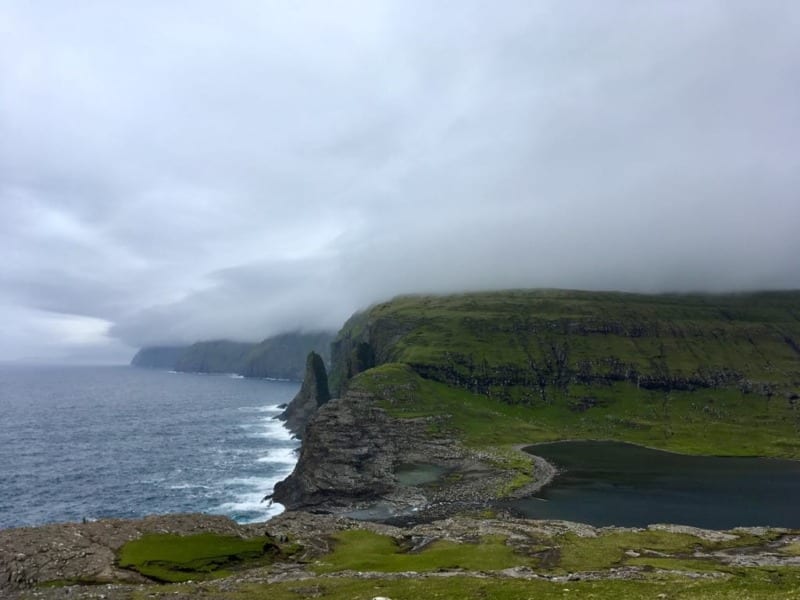
Photo by Christa Rolls
Bøsdalafossur is a waterfall that originates from the overflowing Sørvágsvatn Lake. You can see the edge of the lake just a few minutes’ drive up the road from Vágar Airport.
The waterfall rushes down the rocky cliffs straight into the roiling ocean, making it a fantastic sight. The nearby Trælanípan overlook is also stunning.
A nice trail hike is the only way to access the waterfall. Park at the Miðvágurt trailhead (Coordinates 62.042041, -7.199477) and begin hiking toward the lake. Anticipate for it to take about 45 minutes or so to reach the waterfall from the trailhead. This whole area is absolutely beautiful!
The hike itself is not difficult, just watch your step as it is rocky and muddy. Exercise extreme caution at the waterfall if it’s a windy day. The cliffs are treacherous, as they’re exposed to the sea with no barriers.
6. Tórshavn
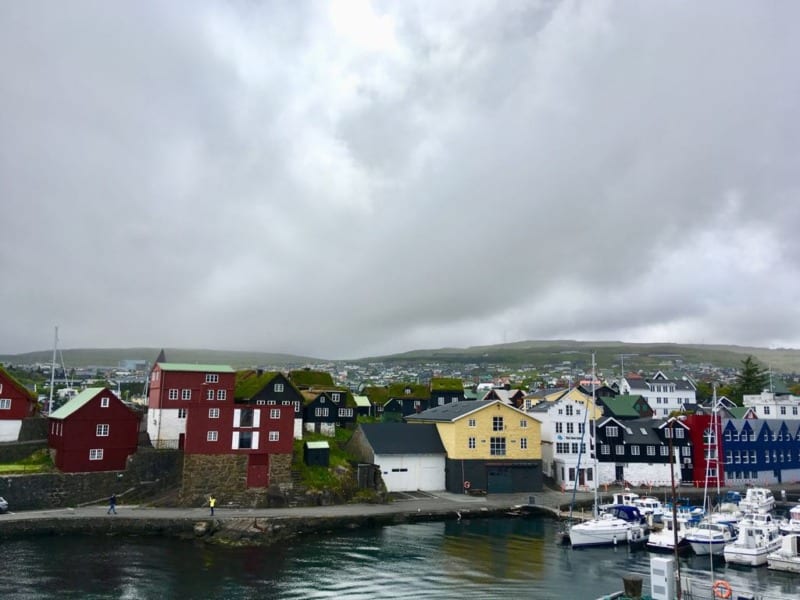
Photo by Christa Rolls
Tórshavn is the largest town in the Faroe Islands, and there’s plenty to see and do directly from town. This is the major jumping off point for most of the ferries and ships (other than Mykines) to get to other islands, such as Skúvoy, Nólsoy, and Suduroy.
We highly recommend Paname Cafe. Their food, pastries, and coffees are exactly what you would want on a chilly Faroese day!
Head up the road toward the harbor to walk around the Tinganes. Here stand the original Parliament buildings for political and commerce discussions among the early Faroese people. Dating back as early as the 9th Century, walk through the narrow, cobblestone passageways and grass-hewn roofs out toward the water’s edge.
Art museums, gift shops, cafes, a melange of restaurants, concert venues, and more can be enjoyed. There are also plenty of places to stay directly in town.
7. Vestmanna
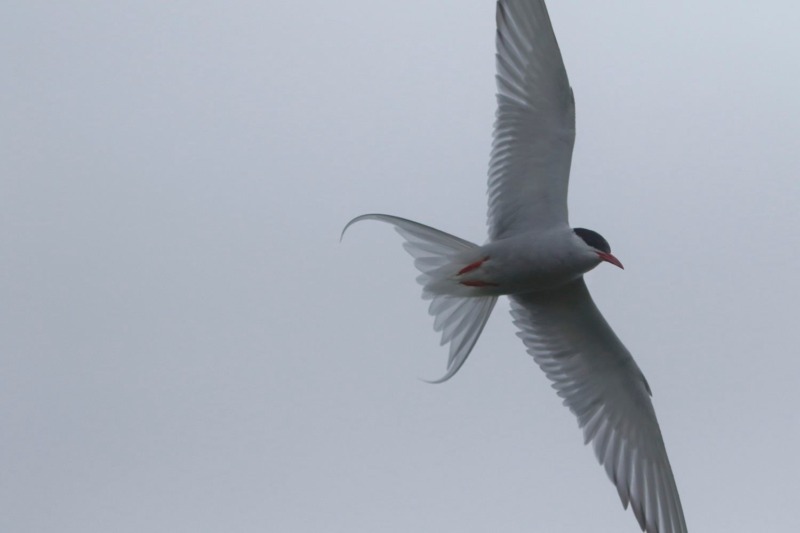
Photo by Nathan Rolls
The Vestmanna bird cliffs is one of the best places to see birdlife on the Faroe Islands.
If you have the right gear and are in good physical shape, it’s possible to hike toward the cliffs of Vestmanna from the main town. However, be wary of the weather. Fog, wind, and rain can make any cliff-side life-threatening in the Faroes.
Look into booking a boat tour to view the cliffs from the ocean. Sure, you’ll have to endure potentially rough seas, but this is the best way to get up close to where the birds will be nesting and soaring over the water before plummeting to gather fish.
Keep in mind that boat trips are seasonal and depend on the weather being optimal. Boats won’t get close to the cliffs if the waves are too high, for your safety!
8. Saksun
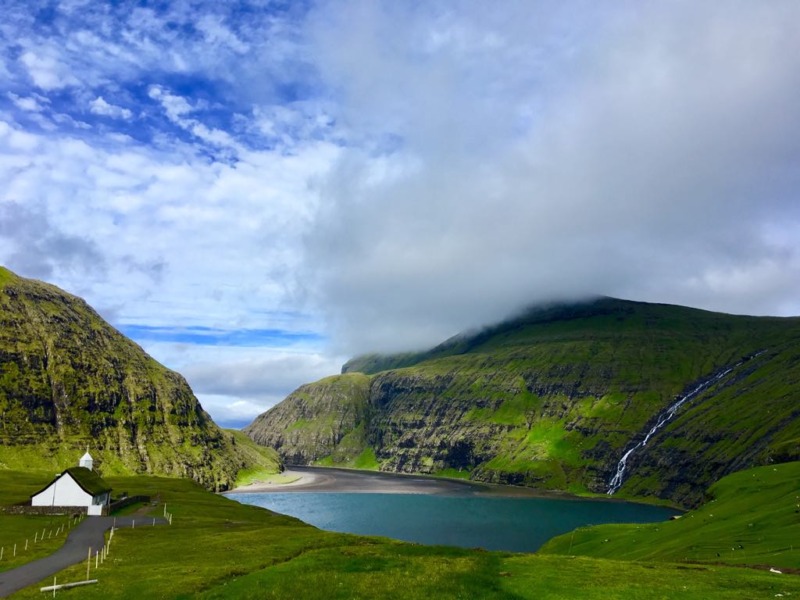
Photo by Christa Rolls
Saksun is one of the most visited villages on the Faroe Islands. Its iconic grass-roofed houses are set in a remote location overlooking beautiful fjords.
The drive alone to Saksun makes the visit worth it. Meander along a narrow road with various vehicle pull-off locations, looking out to cascading glacial streams. Oystercatchers are easy to spot along the streams as well, especially during their summer breeding season.
Upon arriving to Saksun, you’ll reach a fork in the road. Up to the right, you’ll be able to visit the local museum called Dúvugarðar as well as get a fantastic view of the scenery around. From here, you can hike up to the top of the fjord. The trail goes past massive waterfalls along the way, for a wonderful view up top.
If you plan ahead, you can also hike all the way from Saksun to Tjornuvik in a couple of hours. If you go this route, plan for bad weather conditions while high on the hills and arrange to take a chartered bus back to your car in Saksun.
Taking a left at the fork leads you to a parking area. From here, you can walk down to the sandy shores that make up the inlet below Saksun. *Watch the tide carefully* and do not attempt to hike too far out toward the ocean if the tide is scheduled to move back in. This gives visitors another perspective of Saksun’s beauty!
See all of these places and more using our comprehensive Faroe Islands itinerary!
9. Gjogv
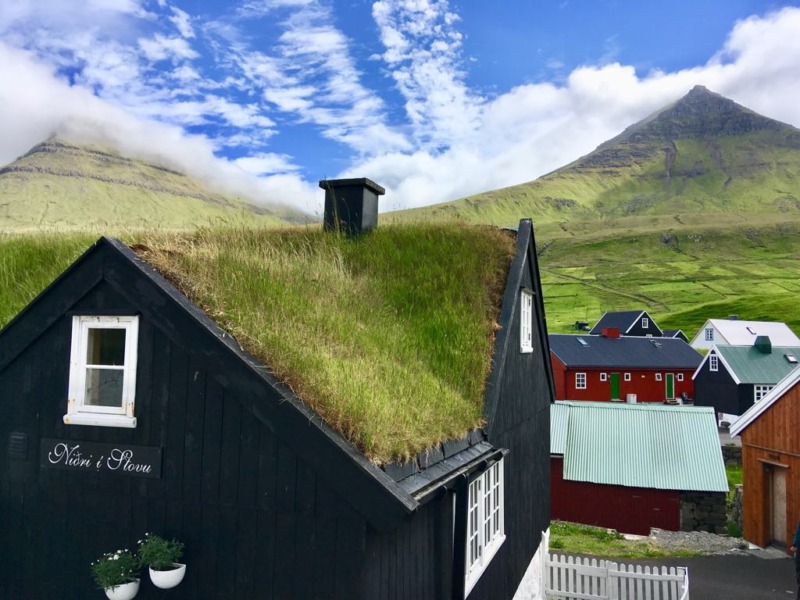
Photo by Christa Rolls
Follow along green hills and cascading streams into the valley that leads to Gjogv, looking out to Kalsoy. This beautiful town is right next to mountain trails just waiting to be explored. Stop along the road heading down to Gjogv to spot some small, yet beautiful, waterfalls.
The Gjaargardur guesthouse offers cozy rooms and tasty food options. This is a great place for visitors to base themselves on the center part of the Islands.
Enjoy a coffee or beer with a view at Gjáarkaffi, and take a walk over to the hill that overlooks the boat inlet. Here, you’ll spot Puffins nesting on the cliffs and diving for fish close by!
10. Tjornuvik
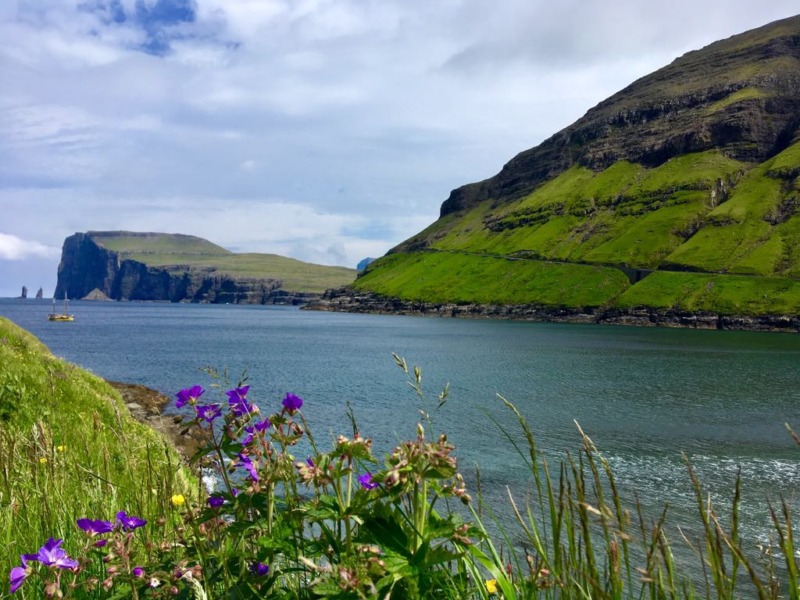
Photo by Christa Rolls
While the road leading to Tjornuvik can be daunting, the end destination is worth the trip.
This beautiful inlet is the perfect place to grab a cup of coffee and carrot cake at the Sand Cafe. In the summertime, people lounge on the beach or play frisbee, even if the weather is chilly and windy.
It is from this location that the legendary sea stacks can be seen. The story goes that these sea stacks were once beings named Risin and Kellingin (Giant and Witch). The Giant and Witch tried to move the Faroe Islands back toward Iceland. With the rising of the sun, they were turned to stone, thus forever entombed in rock to stay on the Faroes forever.
It is possible to hike up the steep hills for an even better vantage point of the valley. This trail connects all the way to Saksun on the other side of the peninsula.
11. Kalsoy
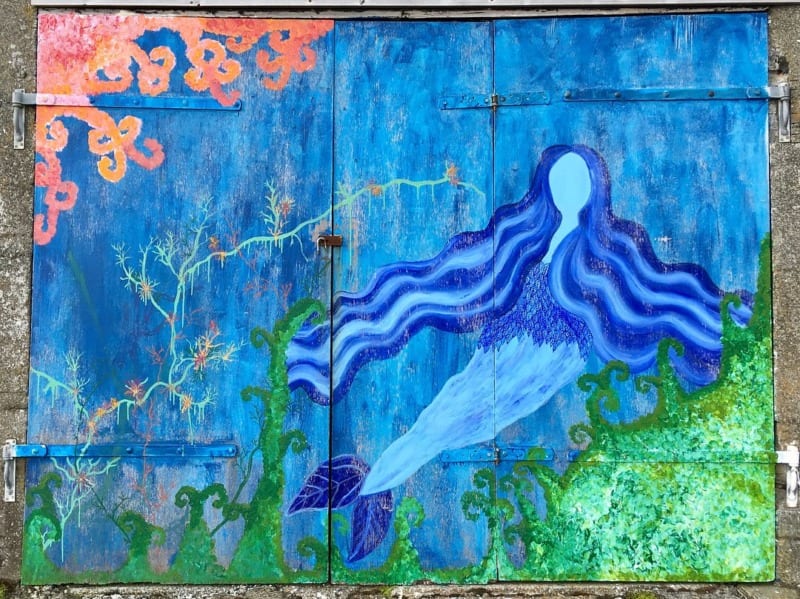
Photo by Christa Rolls
Kalsoy is most famous for two things. First, it is considered an Important Bird Area for the tens of thousands of birds that nest on its cliffs in the summertime. Second, its dramatic landscape and local legend make it a top site for many visitors.
Visitors can catch the ferry from Klaksvik (after enjoying a tasty breakfast at the Fríða Kaffihús) to the Island. Arriving early to the ferry port is important (at least an hour before departure), especially in the height of summer. Prior reservations can’t be made, so arrive early to ensure yourself a spot!
A bus can take you through the tunnels that lead to each of the Island’s four small villages. In Mikladalur, see the Selkie statue and read about her long-told and tragic history.
Continuing on to Trøllanes, hike to the Kallur Lighthouse and take in the natural surroundings!
12. Vidoy
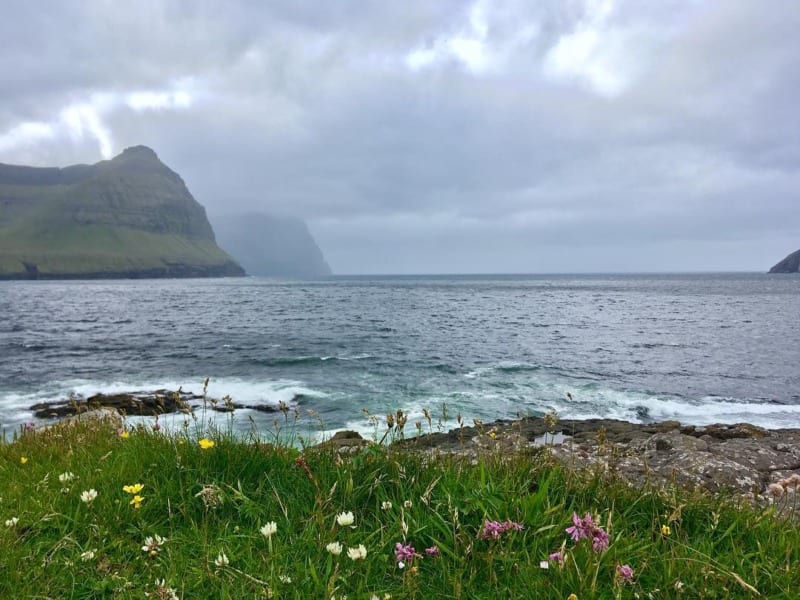
Photo by Christa Rolls
The northernmost island in the Faroe Islands won’t disappoint those interested in hiking and bird watching.
Vidareidi, the main village on Vidoy, looks out to the peninsulas of the neighboring islands, creating a stunning sight, even if the weather turns especially blustery.
Continue up the road from the Hotel Nord and park your vehicle on the widened road pull-off. From here you can hike up into the hills, until you reach the mountain’s peak.
Beautiful views abound all around you. Keep your eyes and ears alert for birds as you walk through the meadows. It is possible to reach the bird cliffs from this path, but we recommend going with a guide, especially if the weather has the possibility to turn inclement.
Warm-up afterward with a nice coffee and cake at the Hotel Nord.
If you’re in Torshavn and aren’t planning on renting a car, don’t fear. You can see Vidoy and the other northern islands in a day on this tour. Or, go on a more extensive four-day tour of the islands to see many of the sites we highly recommend visiting!!
Will you be putting any of these places on your bucket list? Let us know in the comments!!
Happy Travels,
Christa and Nathan
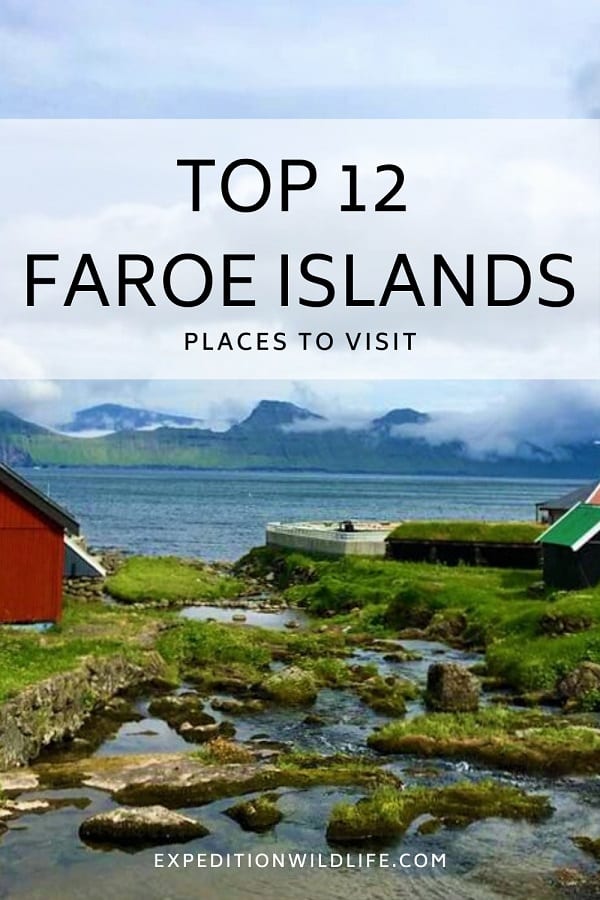

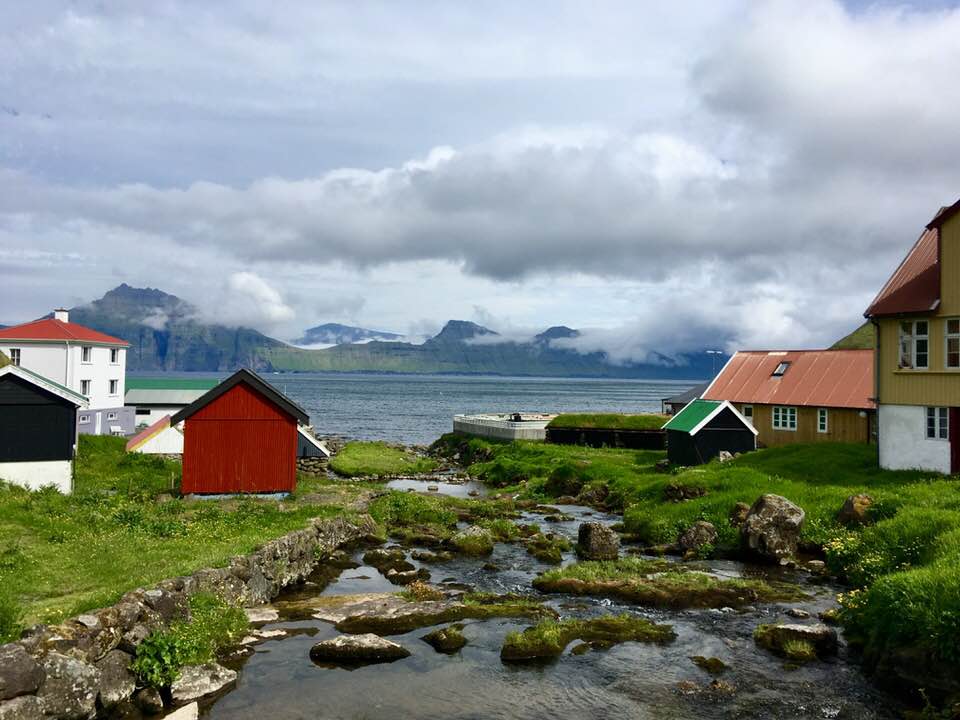


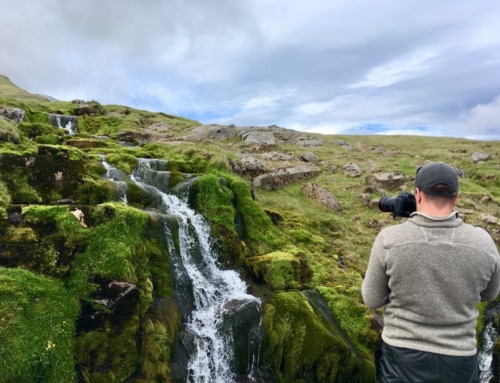
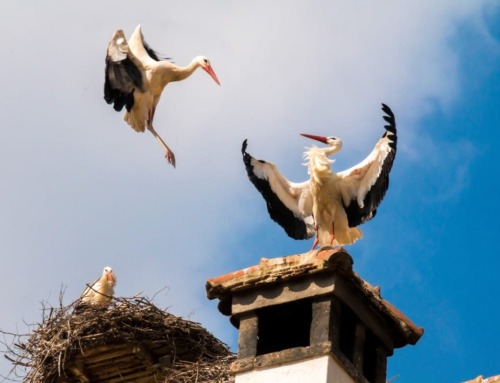


Looks great. I will be going this summer. Unfortunatelly only 6 days. I guess I will have to be quite selective. In any case, all looks quite impresive.
Thanks so much, Pedro, I hope you enjoy your trip!!